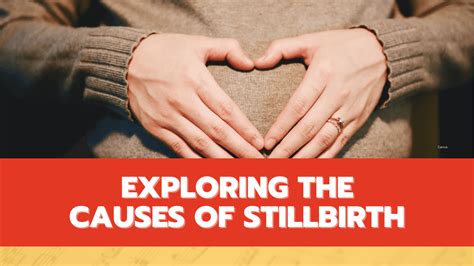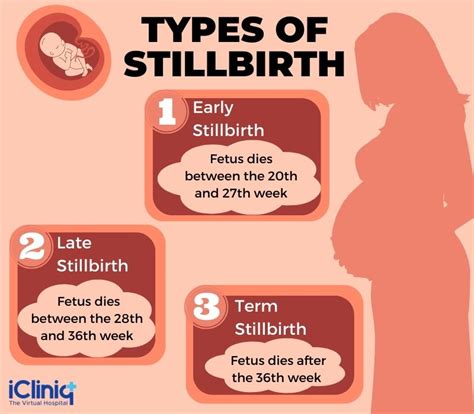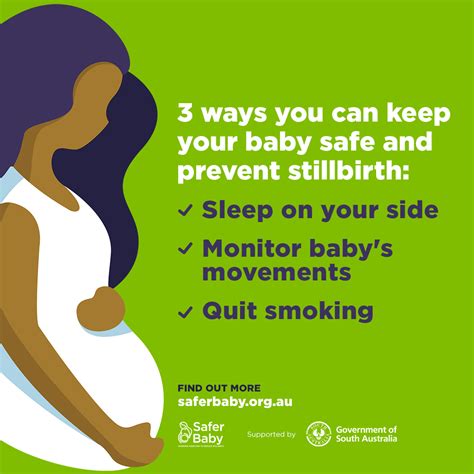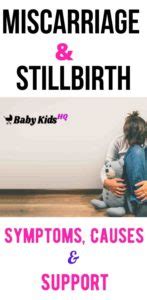Intro
Identify 7 signs of stillbirth, including decreased fetal movement, and learn about stillbirth symptoms, causes, and risk factors to ensure a healthy pregnancy and prevent fetal distress.
Stillbirth, the loss of a baby after 20 weeks of gestation, is a devastating experience for any expecting mother. It's crucial for pregnant women to be aware of the signs that may indicate a potential issue with their baby's health. Monitoring fetal movement and overall pregnancy health can help identify possible complications early on. In this article, we'll delve into the signs of stillbirth, discussing the importance of prenatal care and the measures that can be taken to minimize risks.
Pregnancy is a period of immense joy and anticipation, but it also comes with its set of challenges and worries. One of the most significant fears for any expecting mother is the health and well-being of her baby. Regular prenatal check-ups and being attentive to the baby's movements can provide valuable insights into the baby's condition. However, despite the best care, stillbirth can occur, leaving families with unanswered questions and a deep sense of loss.
Understanding the signs of stillbirth is essential for prompt action. While not all stillbirths can be prevented, recognizing the signs can lead to timely medical intervention, potentially saving the baby's life. It's also important to note that stillbirth can happen to anyone, regardless of their health or the quality of their prenatal care. The key is to stay informed, be vigilant, and maintain open communication with healthcare providers throughout the pregnancy journey.
Introduction to Stillbirth

Stillbirth is a pregnancy loss that occurs after the 20th week of gestation. It's a traumatic event that affects thousands of families worldwide each year. The causes of stillbirth can be varied and complex, including placental problems, fetal growth restriction, infections, and genetic abnormalities. In many cases, the exact cause of stillbirth may not be determined, which can be particularly challenging for grieving families seeking answers.
Understanding the Risks
The risk factors for stillbirth include a history of stillbirth in previous pregnancies, multiple pregnancy (carrying twins, triplets, etc.), and pre-existing medical conditions such as diabetes, high blood pressure, and obesity. Women over the age of 35 also have a slightly increased risk. However, it's crucial to remember that most women who experience stillbirth have no known risk factors, emphasizing the importance of vigilance and regular prenatal care for all pregnant individuals.Signs of Stillbirth

Recognizing the signs of stillbirth is vital for any pregnant woman. While some of these signs can also be indicative of other conditions, it's always best to err on the side of caution and seek medical advice promptly. The following are seven key signs that may indicate a potential issue:
-
Decreased Fetal Movement: One of the most common signs of stillbirth is a decrease in fetal movement. Most women start feeling their baby move between 16 and 25 weeks of pregnancy. If there's a noticeable decrease in movement, it's essential to contact a healthcare provider immediately.
-
No Fetal Movement: The absence of fetal movement after 20 weeks can be a sign of stillbirth. However, it's also possible for women to miss feeling the baby's movements, especially if the baby is small or if the woman has a high BMI.
-
Severe Back Pain: Back pain is common during pregnancy, but severe back pain that doesn't go away with rest or position change could be a sign of a problem.
-
Vaginal Bleeding: Vaginal bleeding during the second or third trimester can be a sign of a potential issue, including stillbirth. The bleeding may be light or heavy and could be accompanied by clots.
-
Foul-smelling Vaginal Discharge: A strong, foul odor from vaginal discharge could indicate an infection, which, if left untreated, could lead to stillbirth.
-
High Fever: A high fever that persists despite treatment could be a sign of an infection that may affect the baby.
-
Pregnancy-induced Hypertension: High blood pressure that develops after 20 weeks of gestation can increase the risk of stillbirth.
What to Do If You Notice These Signs
If any of these signs are noticed, it's crucial to seek medical attention right away. Healthcare providers can perform tests such as an ultrasound to check on the baby's condition. In some cases, stillbirth may not be preventable, but prompt medical intervention can sometimes address underlying issues that may be affecting the baby's health.Prevention and Support

While not all stillbirths can be prevented, certain measures can reduce the risk. Regular prenatal care is crucial for monitoring the health of both the mother and the baby. This includes attending all scheduled appointments, reporting any concerns or changes in fetal movement, and following a healthy lifestyle that includes a balanced diet and avoiding smoking and alcohol.
Support for families who have experienced stillbirth is also vital. Losing a baby can be a devastating experience, and families may need counseling, support groups, and time to grieve. Raising awareness about stillbirth and reducing stigma around pregnancy loss can help ensure that families receive the support they need during a very difficult time.
Coping with Loss
Coping with the loss of a baby can be incredibly challenging. It's essential for families to know that they are not alone and that there are resources available to help them through their grief. This can include professional counseling, support groups, and online communities where they can share their experiences and connect with others who have gone through similar situations.Conclusion and Next Steps

Understanding the signs of stillbirth and taking proactive steps towards prenatal care can make a significant difference in minimizing risks. However, for those who have experienced stillbirth, it's essential to remember that there is support available. Whether through professional counseling, support groups, or simply talking about their experience, families can find ways to heal and move forward.
As we reflect on the importance of awareness and support regarding stillbirth, it's also crucial to encourage open conversations about pregnancy loss. By doing so, we can work towards reducing stigma and ensuring that all families receive the care and support they deserve during one of the most challenging times they may face.
If you or someone you know has experienced stillbirth, consider reaching out to local support groups or online communities. Sharing your story and connecting with others who have gone through similar experiences can provide comfort and help in the healing process. Remember, you are not alone, and there are resources available to support you every step of the way.
What are the most common causes of stillbirth?
+The most common causes of stillbirth include placental problems, fetal growth restriction, infections, and genetic abnormalities. However, in many cases, the exact cause may not be determined.
How can I reduce my risk of stillbirth?
+Regular prenatal care, a healthy diet, avoiding smoking and alcohol, and managing any pre-existing medical conditions can help reduce the risk of stillbirth.
Where can I find support after experiencing stillbirth?
+Support can be found through professional counseling, support groups, and online communities. Many organizations also offer resources and hotlines for families who have experienced stillbirth.
